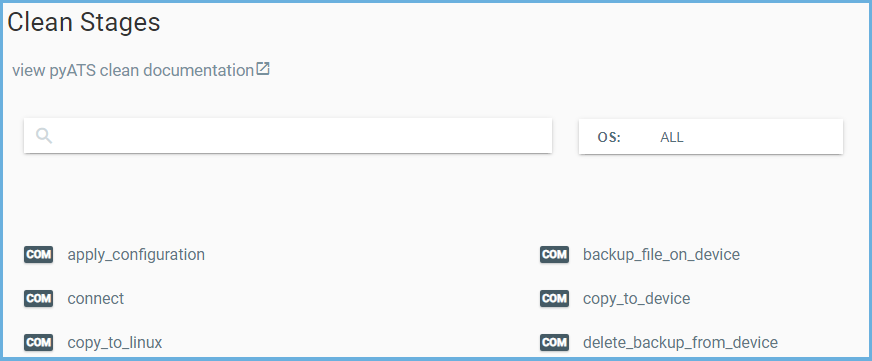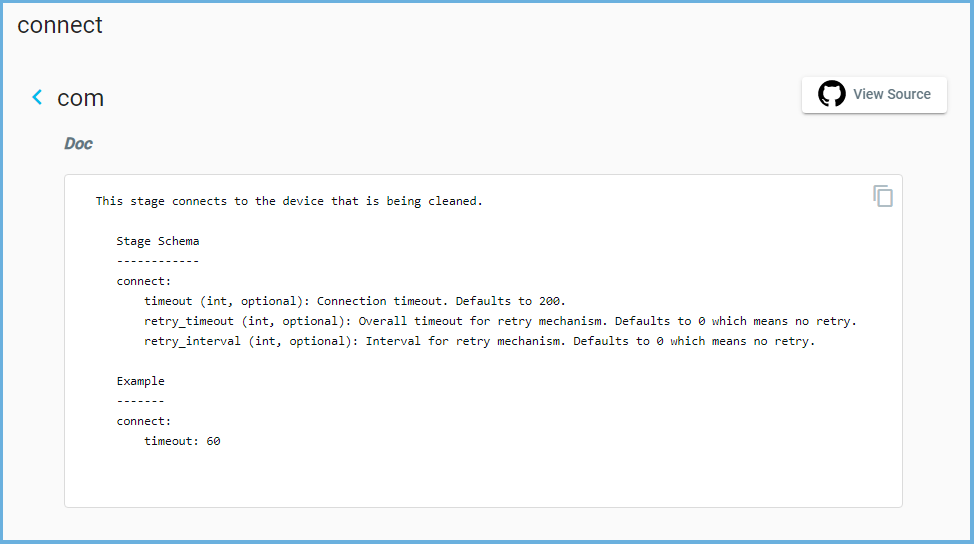Intro to Stages (Clean Step)
Before writing a Clean it is important to learn about Clean Stages as they are the single most important aspect to
pyATS Clean.
The Methodology Behind Clean Stages
pyATS Clean is designed with a modular stage-based architecture and supports abstraction by following a directory
structure where each platform implementation is identified based on the os and platform of the device. This
provides a consistent, reusable, plug-and-play methodology for cleaning devices in a testbed.
You can add, remove, and modify any Clean Stage to suit your specific clean process, or os/platform requirements. This
gives pyATS Clean the flexibility to support a variety of platforms each with its own tailored clean process.
When grouped together, Clean Stages form steps that are executed in the order specified in the Clean YAML file and is
therefore highly customizable.
By dividing the clean workflow into smaller stages, this streamlines the development of the Clean Stage, promotes
code reuse, assists when debugging clean failures, and allows you to specify exactly what to run.
What Clean Stages are Available
pyATS Clean has several Clean Stages that are standard of most user’s operational requirements for cleaning devices.
The below image is an example of the Clean Stage Browser
where all available Clean Stages can be found.
Note
The tokens that appear before the stage designate which OS the stage is available for. The COM token indicates
“Common” to all supported OS types.

Once you find a suitable stage and want to learn more about it, click on the Clean Stage name to see the description and
arguments the Clean Stage accepts. Below is an example of what you can expect after clicking on the connect Clean Stage.

The source code for the Clean Stage can also be found from the
Clean Stage Browser by clicking the
View Source button as seen in the above image. The button will open a new tab in your browser to the exact file and
line number the Clean Stage code is located at.
Developing New Clean Stages
Additional stages can be added to meet your specific testing requirements with just a few steps.
It is expected user communities will contribute to the pyATS Clean Stages pool for supporting specifics of their given
os/platform or to close the gap on an any features.
Refer to the Developer Guide documentation to get started in your development.